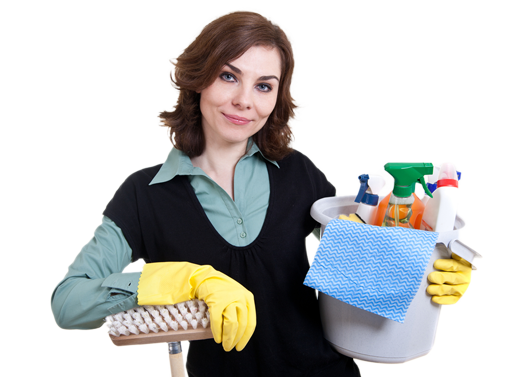How to Effortlessly Clear Burnt-on Residue from Stovetops
Posted on 28/06/2025
How to Effortlessly Clear Burnt-on Residue from Stovetops
Are you tired of stubborn, burnt-on residue ruining the sparkling look of your stovetop? Cleaning your stove doesn't have to be a dreaded task! Learning how to effortlessly clean burnt-on residue from your stovetop can save you time, keep your kitchen hygienic, and extend the life of your appliance. In this comprehensive guide, discover proven methods, safe cleaning products, and maintenance tips to restore your stovetop's shine without hassle.
Why Burnt-on Residue is Tough to Remove
Burnt-on residue forms when food or liquids spill onto a hot stovetop and carbonize. The intense heat changes the chemical makeup of the spilled material, resulting in a hardened, often sticky layer that's difficult to remove with ordinary wiping. Regular cleaning, however, can prevent build-up and make residue removal much easier.
The Cost of Leaving Residue Unattended
- Damage to stovetop surfaces - Over time, stubborn stains can permanently mark your stovetop or etch into certain materials.
- Unpleasant Odors - Burnt remnants may emit foul smells, especially when reheated.
- Reduced Efficiency - Residue can block burner holes, causing uneven heating.
- Attracts Vermin - Residue can draw in pests like ants, cockroaches, and flies.

Types of Stovetops and Burnt-on Residue Removal
Different stovetops require tailored approaches to residue removal to avoid damage and ensure effective cleaning. Let's explore the most common types:
1. Gas Stovetops
- Typically made of metal grates and enamel or stainless steel surfaces.
- Removable components make deep cleaning easier.
2. Electric Stovetops
- Feature coil burners or solid surfaces (glass or ceramic).
- Delicate glass/ceramic areas require gentle yet effective methods.
3. Induction Stovetops
- Sleek, glass surfaces require special care to avoid scratches.
- Underlying components can be sensitive to moisture.
How to Effortlessly Clean Burnt-on Residue: Step-by-Step Methods
Let's break down simple, effective, and safe ways to clear burnt-on residue from stovetops--for all stovetop types!
Preparation: Gather Your Supplies
- Soft sponges or microfiber cloths
- Baking Soda
- White Vinegar
- Lemon Juice (optional for natural degreasing)
- Non-abrasive scrapers (a plastic scraper is safe for glass/ceramic)
- Mild Dish Soap
- Rubbing Alcohol (for tougher stains)
- Rubber gloves (to protect your hands)
Basic Cleaning Routine
- Let your stovetop cool completely before starting.
- Wipe off loose debris with a damp cloth.
- Mix a baking soda paste (3 parts baking soda to 1 part water).
- Apply the paste to burnt-on residue and let it sit for 10-15 minutes.
- For particularly tough stains, spray a little vinegar over the baking soda paste and allow it to fizz.
- Gently scrub with a non-abrasive sponge or a microfiber cloth.
- Wipe away residue with a clean, damp cloth and buff dry.
Tip: For best results, remove burners and drip pans (where applicable) and clean them separately.
Special Techniques by Stove Type
For Gas Stovetops
- Remove grates and burner covers. Soak them in a sink filled with hot, soapy water for at least 15 minutes.
- Use a soft brush or scrub pad to clean off loosened residue.
- For stubborn spots, sprinkle baking soda directly onto the area and scrub gently.
For Glass/Ceramic and Induction Stovetops
- Apply the baking soda paste directly to stains.
- Cover with a damp cloth and let it sit for 10-20 minutes.
- Gently scrape residue with a plastic scraper designed for glass.
- Don't use steel wool or harsh pads which can scratch the surface.
Tackling Extremely Stubborn Burnt-on Stains
Some residues are nearly carbonized and pose a real challenge. Here are advanced steps for those problem spots:
- Make a paste of baking soda and hydrogen peroxide for extra power. Apply, let sit for 15+ minutes.
- Use a damp cloth to wipe away loosened grime.
- Repeat as needed, or use a commercial stovetop cleaner formulated for your range type.
- For incredibly persistent spots, try soaking with layers of paper towel soaked in vinegar, laid over the residue for an hour (only on cooled surfaces).
Top Products for Effortlessly Clearing Burnt-on Residue
While natural products work wonders, there are commercial solutions created specifically to remove burnt-on residue from stovetops. The most effective, and safe options include:
- Bar Keeper's Friend (gentle abrasive for glass, ceramic, and enamel)
- Weiman Glass Cook Top Cleaner & Polish (for induction and glass tops)
- Affresh Cooktop Cleaning Kit
- Magic Eraser Sponges (for quick touchups, test first on a small spot)
Always follow manufacturer guidelines to avoid voiding your appliance warranty.
Pro Tips to Prevent Burnt-on Residue in the Future
Prevention is the best way to keep your stovetop in prime condition. Consider these simple habits:
- Wipe your stovetop after each use while spills are fresh and easier to remove.
- Clean up spills immediately. Quick action prevents burns from setting.
- Deep clean weekly. Regularly deep cleaning prevents accumulation of stubborn stains.
- Use burner liners designed for your stove to catch spills (only when manufacturer-approved).
- Always use pots and pans with clean, dry bottoms to reduce scorching.
Things to Avoid When Cleaning Stovetops
- Don't use steel wool or abrasive pads on glass or ceramic, to prevent scratching.
- Avoid harsh chemicals like oven cleaner unless labeled safe for stovetops.
- Don't immerse electric coil elements or ignition components in water.
- Avoid using sharp tools like knives or metal scrapers.
Eco-Friendly Alternatives for Stovetop Cleaning
Looking for green, sustainable ways to clean burnt-on residue off your stove? Try these eco-friendly methods:
- Lemon and Baking Soda: Sprinkle baking soda, rub with half a lemon, let sit, and clean with a damp cloth. Natural acids help dissolve residue and leave a fresh scent.
- Vinegar Steam: Heat a small pan of white vinegar on the stovetop to loosen stubborn grime (for electric/gas only; do not heat on glass directly).
- Castile Soap Solution: Dilute natural Castile soap for a gentle, effective cleanser.

Frequently Asked Questions: Clearing Burnt-on Stovetop Residue
1. How often should I deep clean my stovetop?
Aim to deep clean your stovetop at least once a week, or more often if you cook frequently or handle particularly messy dishes.
2. What's the safest way to scrape burnt-on gunk?
Use a plastic scraper or specialized cooktop razor blade (specifically designed for glass). Always hold it at a shallow angle to avoid scratching.
3. Can I use bleach to remove burnt-on stains?
It's not recommended. Bleach can damage surfaces and may interact dangerously with other cleaning agents. Stick to baking soda, vinegar, or safe commercial cleaners.
4. Is dish soap enough to remove burnt-on residues?
While dish soap can help with greasy spills, it may need reinforcement (like baking soda or vinegar) for hardened, burnt-on spots.
5. What's the best quick fix for a minor fresh burn?
If you notice a recent spill, sprinkle baking soda while the area is still warm (but not hot), and wipe with a damp cloth. This prevents hardening and makes future cleaning easy.
Conclusion: Enjoy a Spotless Stove with Less Effort
With the right techniques and supplies, removing burnt-on residue from your stovetop is simpler than you think. Regular cleaning, prompt attention to spills, and using the correct products keep your appliance looking and performing its best. By following these expert tips, you can ensure your kitchen remains both sparkling clean and hygienic--no elbow grease required!
Start using these stovetop cleaning methods today and say goodbye to burnt-on residue for good!





